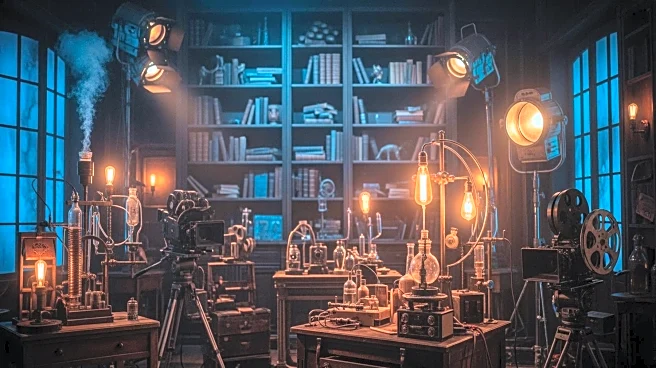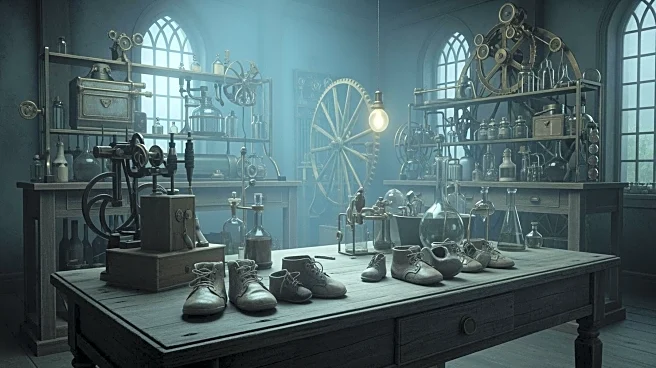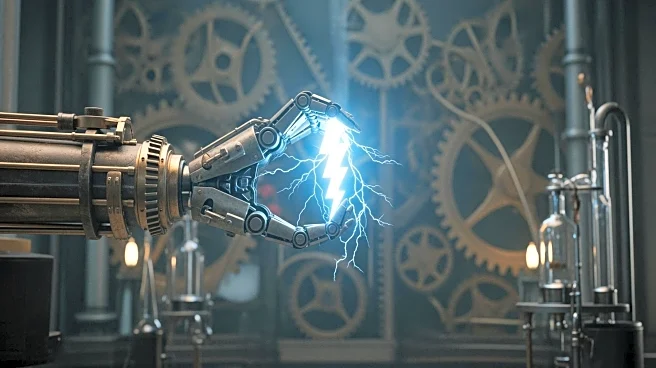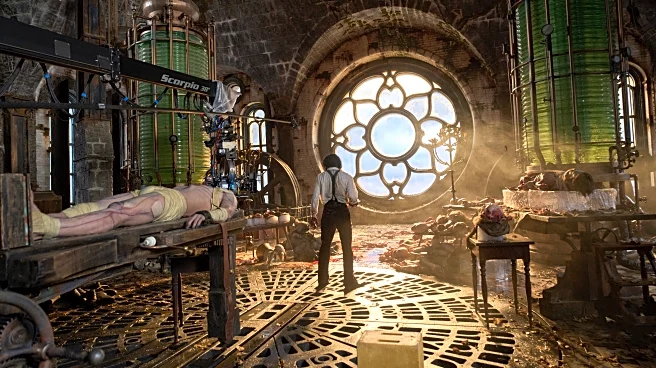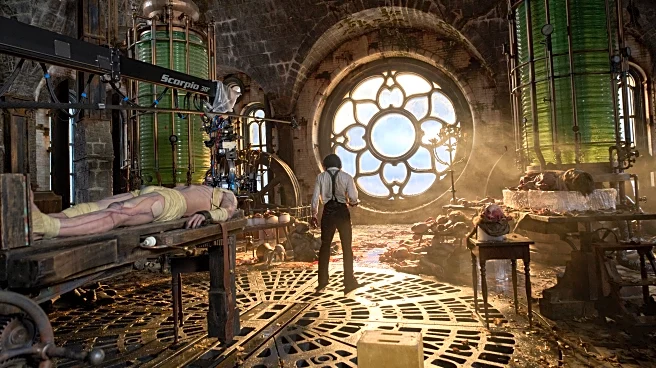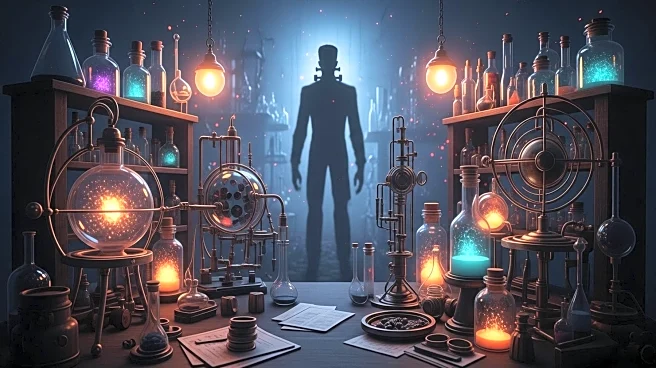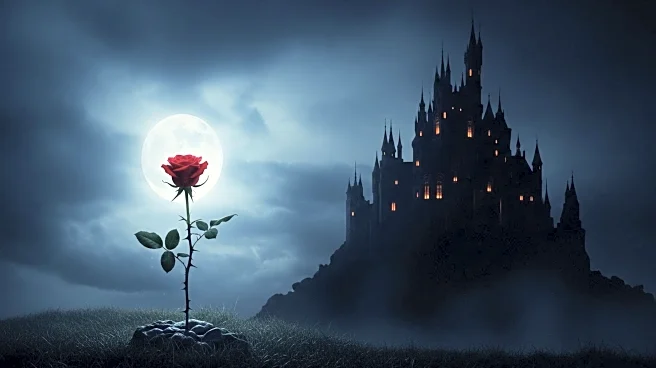What's Happening?
Guillermo del Toro's adaptation of Mary Shelley's 'Frankenstein' is a cinematic endeavor that brings together a team of skilled artisans to create a visually stunning and emotionally resonant film. The
production features a massive laboratory set designed by Tamara Deverell, perched atop a Scottish stone tower, and includes intricate apparatus and a malformed body on the operating table. Costume designer Kate Hawley and creature designer Mike Hill collaborated to craft the appearance of Frankenstein's monster, aiming for a newborn look rather than a traditional stitch-covered monstrosity. The film, a $120 million epic for Netflix, stars Oscar Isaac as Victor Frankenstein and Jacob Elordi as the monster. Cinematographer Dan Lausten employed single-source lighting and candle-lit scenes to enhance the gothic atmosphere, while composer Alexandre Desplat created a score that captures the unspoken emotions of the characters.
Why It's Important?
The film represents a significant achievement in filmmaking, combining traditional Hollywood craftsmanship with modern cinematic techniques. It highlights the collaborative nature of film production, where each element—from set design to costume and creature creation—must work in harmony to achieve the director's vision. Del Toro's 'Frankenstein' not only pays homage to the original gothic novel but also reimagines the monster in a way that emphasizes its humanity and emotional depth. This adaptation could influence future film projects by demonstrating the value of meticulous craftsmanship and the importance of a cohesive artistic vision. The film's release on Netflix also underscores the platform's role in supporting high-budget, artistically ambitious projects.
What's Next?
The film is set to open in theaters and begin streaming on Netflix, potentially reaching a wide audience and sparking discussions about its artistic and thematic choices. As viewers experience del Toro's unique interpretation of 'Frankenstein,' there may be critical analysis and debate regarding the film's portrayal of the monster and its alignment with Shelley's original narrative. The success of the film could lead to further collaborations between del Toro and his team of artisans, as well as inspire other filmmakers to pursue similarly ambitious projects. Additionally, the film's reception may influence Netflix's future investment in high-budget, artistically driven films.
Beyond the Headlines
Del Toro's 'Frankenstein' explores deeper themes of creation, identity, and humanity, inviting audiences to reflect on the ethical implications of scientific experimentation and the societal treatment of those deemed 'monstrous.' The film's emphasis on the monster's emotional journey challenges traditional perceptions and encourages empathy for the creature. This adaptation may contribute to ongoing cultural conversations about the nature of monstrosity and the importance of understanding and accepting differences. Furthermore, the film's craftsmanship highlights the enduring value of traditional filmmaking techniques in an era dominated by digital effects.
